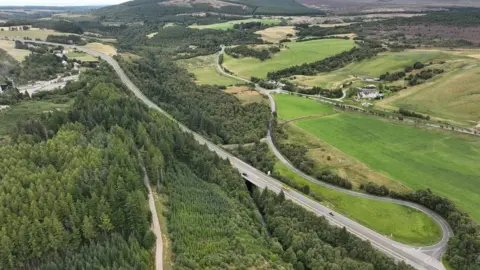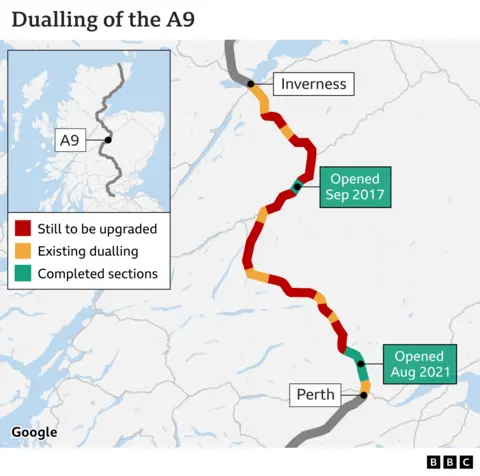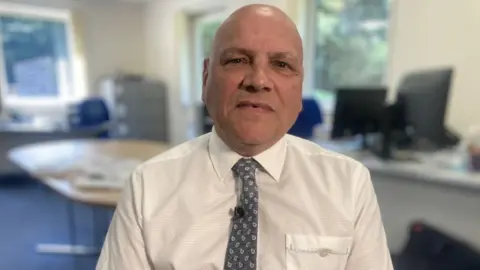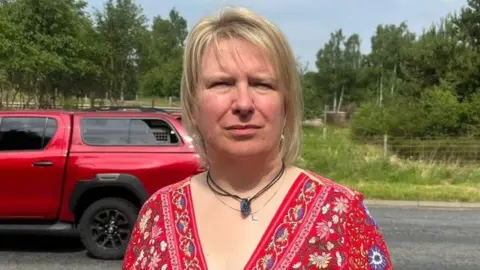'Years of warning' over A9 dualling timescale
 BBC
BBCCivil engineers said they knew for years a target to dual the A9 from Inverness to Perth by 2025 would not be met.
The Scottish government committed to the date in 2011, when the project was predicted to cost £3bn.
In February this year, the then transport minister Jenny Gilruth said the target was "unachievable".
She said the project had been hit by delays caused by the Covid pandemic, Brexit and the war in Ukraine.
Eleven miles (18km) have been dualled in 10 years, leaving about 77 miles (124km) of road to still be upgraded.
MSPs are due to hear from Civil Engineering Contractors Association (CECA) Scotland as part of their consideration of a petition calling for details of the revised timetable for the project.
The industry body said the dualling so far had been "glacial" and engineers had long known the project was progressing too slowly to be completed on time.


There have been calls for the Inverness to Perth stretch to be dualled for many years due to its strategic importance, connecting the Highland capital with central Scotland, and because of the number of accidents.
In 2008, the Scottish government said improving the road was a priority.
In December 2011, it committed to dualing the A9 between Inverness and Perth by 2025 - a timescale which was described as "challenging but achievable".
Construction on the first section - the £35m, 4.6 mile Kincraig to Dalraddy stretch - started in 2015 and was completed in 2017.
The only other section to be finished to date was the Luncarty to Pass of Birnam project, which cost £96m and involved six miles of dual carriageway. Construction started in 2019 and it opened to traffic in 2021.
Nine sections remain to be built.
There are no plans to dual the A9 north of Inverness, where there are 104 miles of single carriageway from the Black Isle to Scrabster.


Speaking ahead of Wednesday's meeting, chief executive Grahame Barn told BBC Scotland: "We have known for a number of years that the pace at which the design and road orders were coming forward meant it was impossible to achieve 2025 by that time."
Campaigner Laura Hansler, who lives in Kincraig, near Aviemore, is also due to give evidence to MSPs on Holyrood's petitions committee.
She said the A9 had been treated like a forgotten back road, rather than the "spine of Scotland" linking central parts of the country with the Highlands.

Ms Hansler said: "We need focus and we need to stop people getting killed on our roads."
SNP MSP and former transport minister Keith Brown told BBC Scotland the road project was facing huge challenges.
He said: "It is true across the UK more than other countries that infrastructure projects have been extremely expensive and we have a narrower base of construction companies involved in this work.
"It seems to me, knowing what I know about it, the terms of the project which were taken forward have changed and that is bound to have had an effect."
